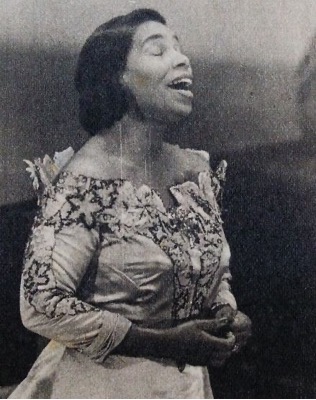Taking the Stage: The Story of Marian Anderson
Feb 24, 2023
During Black History Month, Fairfield County’s Community Foundation is profiling historical Black figures who thrived and increased opportunities for others despite racial, gender and other barriers. We celebrate the contributions and impact of these “Equity Trailblazers” who helped light the way to make our community a stronger, more equitable place to live.
As an equity trailblazer, the late Marian Anderson used her voice and her platform to bring together people from all races and backgrounds to become one of the most famous and influential opera singers of the 20th century.

She made history by being the first African American to sing with the Metropolitan Opera and, in 1939, broke barriers when she sang My Country Tis of Thee before 75,000 people at the Lincoln Memorial — a performance that would become an iconic moment in the Civil Rights movement during the 1960s.
Anderson had a long connection to Fairfield County that spanned more than half a century. She moved to Danbury in 1940 and lived on Marianna Farm with her husband for more than 50 years.
Her path to success and influence was not easy. She dealt with poverty in her early years and faced racial discrimination throughout her life.
Born in Philadelphia in February 1897, Anderson lived with her mother and two younger sisters. Like most Black people during this time, she and her family struggled to make ends meet. Anderson’s father died when she was 12 and her mother took in laundry and other odd jobs to provide for her family.
From an early age music provided solace and inspiration. She joined her church choir at six years old and started her first singing lesson at age 15.
In 1925, her vocal coach, Giuseppe Boghetti, entered her into the New York Philharmonic voice competition, where she competed against 300 other vocalists. She took first prize and was signed by a concert manager, which kickstarted her performance career.
After spending much of the 1930s traveling Europe and honing her skills as a contralto vocalist, Anderson returned to the U.S. After a performance in New York, Howard Taubman from the New York Times hailed the singer, writing she had returned to the States, “one of the greatest singers of her time.”
That sentiment was shared by many, including the legendary New York Philharmonic conductor Arturo Toscanini, who said that “a voice like hers is heard once in a hundred years.”
While Anderson had captured the hearts of many with her voice and humble spirit, her success was often met with challenges.
For instance, in 1939 her manager, Sol Hurok, tried to book her at Constitution Hall in the national headquarters of the Daughters of American Revolution (D.A.R.) Hurok was told all the dates were booked. The reality was Anderson was denied because of her race. When First Lady Eleanor Roosevelt – who was a member at the time – heard the news, she resigned from the organization, along with many other prominent women.
In 1955, at the age of 58, Anderson broke another racial barrier, becoming the first African American soloist for the Metropolitan Opera.
By 1957, the U.S. State Department had given Anderson the position of goodwill ambassador and sponsored her tour to Israel, Asia and the South Pacific, where she performed 24 concerts in 14 countries.
Her overseas work also included being a member of the United Nations Trusteeship Committee, a role that charged her with helping to ensure the well-being of over 100 million people living in U.N. territories in Africa and the South Pacific.
Anderson sang for President Dwight D. Eisenhower’s second inauguration and President John F. Kennedy’s inauguration. Two years later, President Kennedy honored Anderson with the Presidential Medal of Freedom.
Anderson was inducted into the Connecticut Women’s Hall of Fame in 1994, a year after her death.
Today, her trailblazing legacy – and angelic voice – continues to live on through museums located in Philadelphia and Danbury.

